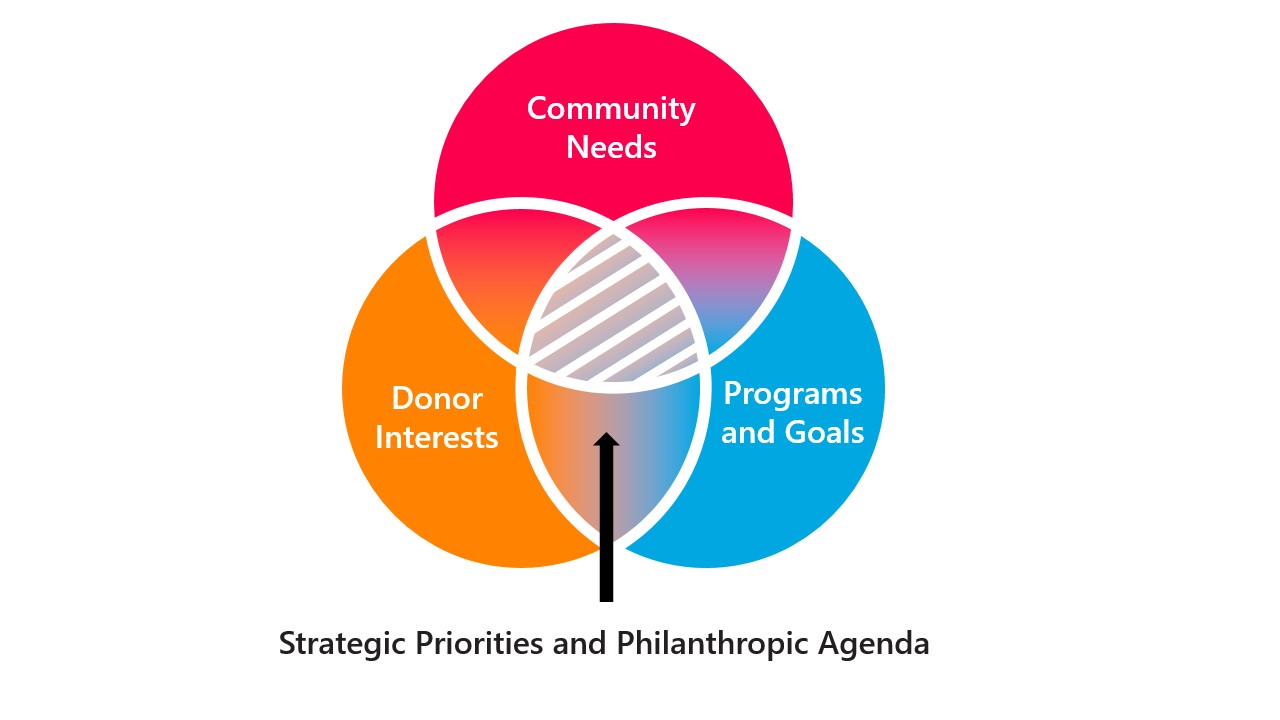A successful campaign requires many factors, but one of the most critical is maintaining positive momentum from start to finish. Momentum doesn’t happen by chance—it’s the result of both deliberate actions and strategic decisions that position an organization for success.
Many assume that momentum begins in the public phase—the moment a campaign is announced. In reality, it starts much earlier. A strong foundation is built during the planning stage, when staff, organizational leadership, board members, and key donors become invested in the campaign’s success. This shared sense of ownership ensures that the campaign is an organization-wide effort rather than the sole responsibility of the advancement team.
Laying the Groundwork for Momentum
Strategic Planning: Setting the Course for Success
Before launching a campaign, an organization must clearly define its goals for the for the future and articulate how those goals align with its mission. A well-structured strategic planning process helps identify the organization’s priorities and establishes a roadmap for achieving them.
This process should engage multiple stakeholders—staff, board members, and key donors—fostering early buy-in and creating a shared vision for the organization’s future. A strong strategic plan serves as a guiding document for the organization and can be an excellent launching point for a campaign. A well–done strategic plan that is utilized properly during a campaign can ensure that a future campaign’s messaging and initiatives remain aligned with the organization’s long-term goals and increase organizational support or the campaign.
Campaign Readiness: Ensuring Confidence and Preparation
Campaigns should generate excitement, not anxiety. A well-prepared advancement team leads with confidence, and that confidence comes from thorough preparation. Conducting a campaign readiness assessment allows an organization to identify strengths, address potential gaps, and refine strategies as the campaign framework is being developed.
This assessment should include feedback from both internal and external stakeholders, providing valuable insights that shape campaign strategy. A well-organized readiness evaluation helps align resources, ensuring a smooth and successful campaign rollout.
Priority Identification: Creating the Philanthropic Agenda
One of the most overlooked but essential steps in campaign planning is refining funding priorities. Campaign priorities should be directly tied to the organization’s strategic plan—offering donors a clear, compelling vision rather than a disconnected list of funding opportunities.
Successful fundraising is dependent in part on the ability to identify the intersection among organizational programs and goals, community needs, and donor interests and passions. In fact, fundraising priorities (i.e., the philanthropic agenda) lie at this intersection:  Engaging organizational leaders, board members, and potential campaign volunteers in this process ensures alignment and shared ownership. Each priority should have a designated champion within the board and among campaign volunteers, reinforcing commitment and reducing surprises during execution.
Engaging organizational leaders, board members, and potential campaign volunteers in this process ensures alignment and shared ownership. Each priority should have a designated champion within the board and among campaign volunteers, reinforcing commitment and reducing surprises during execution.
Portfolio Review and Lead Donor Identification: Aligning Goals with Philanthropic Capacity
A successful campaign hinges on securing lead gifts early. Conducting a thorough portfolio review and wealth analysis ensures that the campaign goal aligns with donors’ philanthropic capacity. This process allows the advancement team to focus on the right prospects from the outset, building strategic engagement plans and fostering confidence in the campaign’s feasibility.
BWF’s Insight Analysis offers valuable data-driven insights into top prospects’ connections to the organization, helping teams prioritize outreach efforts and secure the foundational gifts that drive momentum.
Volunteer Engagement: Building a Strong Support Network
Engaging volunteers early and providing them with clearly defined roles strengthens the campaign’s reach and effectiveness. Volunteers serve as vital extensions of the advancement team, leveraging their networks and influence to amplify the campaign’s impact.
As the campaign progresses, volunteer roles should evolve. Leadership-phase volunteers may focus on securing major gifts, while others may drive outreach in later phases. Recruiting new volunteers at key points in the campaign keeps the team energized and engaged.
Developing a Campaign Plan: A Roadmap for Success
Every successful campaign is guided by a comprehensive campaign plan—a living document that outlines key milestones, fundraising priorities, volunteer roles, and messaging strategies. This plan should be regularly updated to reflect shifting circumstances while providing a clear framework for each phase of the campaign.
Celebrating Early Wins: Fueling Momentum
Despite the “silent phase” label, early successes should be recognized and celebrated. Highlighting lead gifts and connecting them to the strategic plan reinforces the campaign’s desired impact. Publicizing these early wins—whether through donor spotlights, leadership communications, or select public announcements—builds excitement and encourages additional support. Donors are inspired by progress, and seeing their peers invest in the campaign creates powerful momentum.
Maximizing the Planning Stage
Building campaign momentum doesn’t start with the public launch—it begins in the planning stage and builds in the leadership phase. Thoughtful strategic planning, readiness assessments, clear priority identification, early volunteer engagement, and celebrating key milestones all contribute to a campaign’s long-term success.
By investing time in these foundational steps, organizations create energy and enthusiasm, secure broader buy-in from staff and volunteers, and position themselves for a strong, sustainable campaign. To learn more about how BWF can help you optimize the planning stage of your next campaign, please contact sales@bwf.com.
Register for our webinar on February 27, Momentum Matters: Strategies for Maintaining Comprehensive Campaign Success, to continue the conversation and ask questions in real-time!




